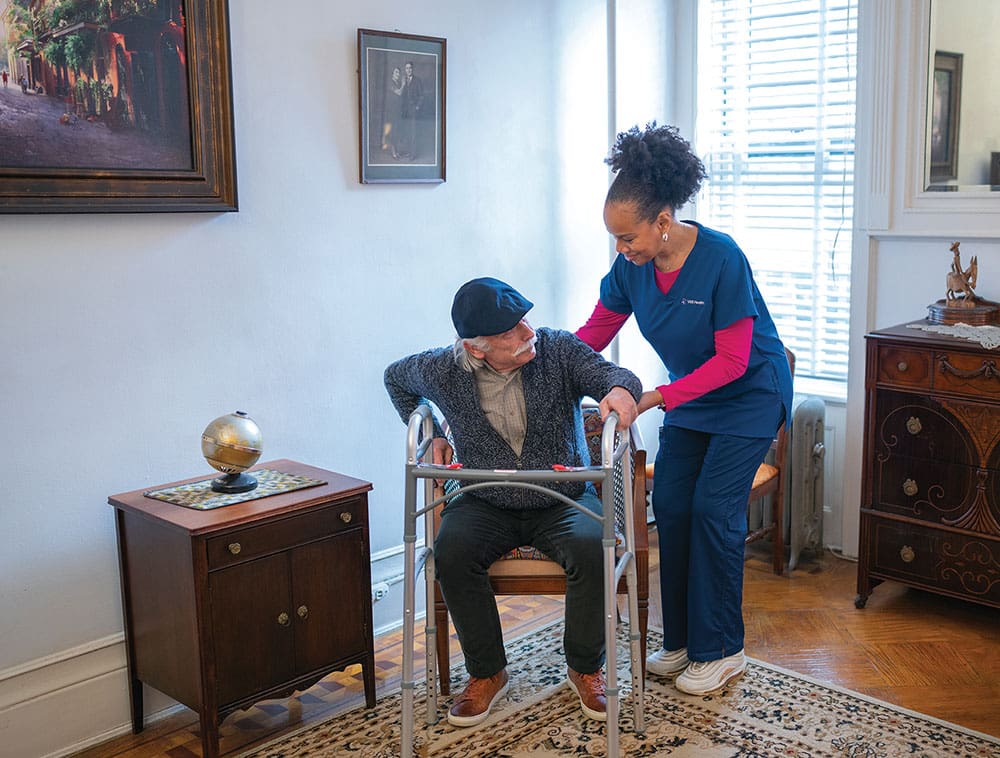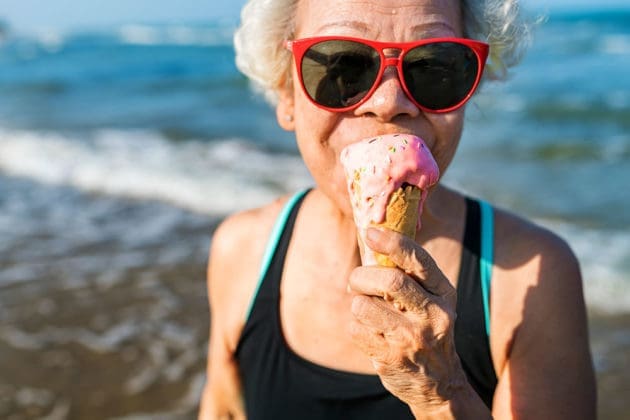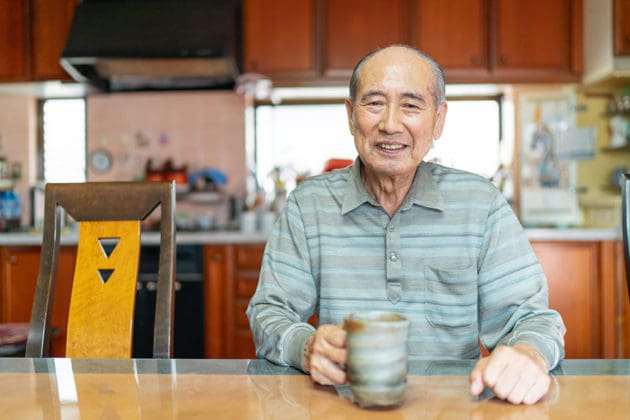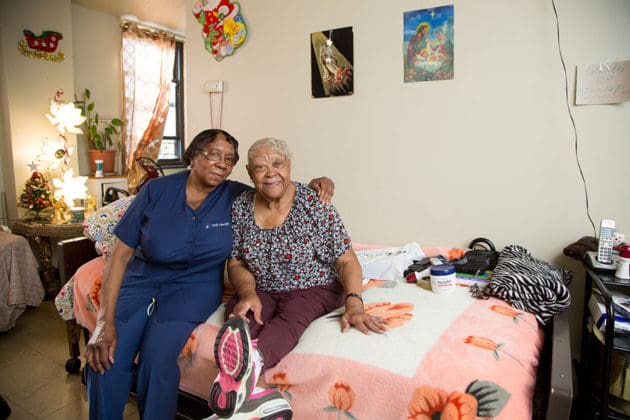
Do you spend time worrying about your parent’s home safety? Trips and falls are the most common kinds of accidents in the home, and they can be very dangerous for older adults. You can reduce your parent’s risk of falling by making their home safer and addressing any medical risk factors they might have. These simple tips can help prevent falls to keep your parents safe at home.
Risk Factors at Home
There are many safety hazards that can increase your loved one’s risk of falling. Small changes can play a big role in fall prevention, and you may have more control over their home safety than you think.
Clear paths
Look around each room in your parent’s home. Arrange furniture so they can walk around and through the room easily. (Tip: Ask your loved one what kinds of things they need to be able to do each day, so that the paths work for them.)
Eliminate clutter
Remove anything that can cause trips and falls, such as shoes, books, and laundry baskets. A good rule of thumb? If something doesn’t need to be there, remove it. Move electrical cords, or tape them down. (Tip: Do not hide cords under rugs! This is a fire hazard.)
Getting rid of safety hazards can help prevent falls, but you may find that your loved one needs additional support to live independently. A home health aide may be able to increase their safety at home.
Install proper lighting
Be sure stairways are well lit, and use nightlights in hallways, bedrooms, and bathrooms. If an outlet isn’t available, you can use battery-powered push lights. Having proper lighting that’s easy to use can prevent a fall day or night. (Tip: The type of lighting you use is important — overhead lighting can be too bright or harsh. Table lamps are a great option.)
Maintain assistive devices
Make sure your loved one always uses their walker, cane, or other assistive devices. If they use a cane or a walker, make sure that the rubber tips are intact. Worn-out tips can make the device unsafe and cause a fall. New rubber tips can be found at a drugstore or surgical supply store. (Tip: If your loved one’s home has stairs, keep an assistive device on each level.)
Ensure balance and stability
Be sure stairways have sturdy railings so your loved one can confidently walk up and down the stairs. Installing grab bars wherever extra support might be needed, such as in the bathroom and the shower, can help prevent a fall. (Tip: Remember that a towel bar isn’t designed to support a person’s body weight.)
Getting rid of safety hazards can help prevent falls, but you may find that your loved one needs additional support to live independently. A home health aide may be able to increase their safety at home.
Medical Factors and Falling
In addition to household hazards that can lead to a fall, certain medical conditions and medications can increase your loved one’s risk of falling.
Your loved one may be at a higher risk for a fall if they have:
- Diabetes: Diabetes can cause joint pain, pressure sensitivity in the feet, dizziness, and vision problems.
- Circulatory diseases: Conditions like congestive heart failure, low blood pressure (hypotension), and COPD can cause dizziness and affect balance.
- Bone and joint conditions: Conditions such as osteoporosis and arthritis can affect balance and mobility.
- Eye diseases: Conditions like glaucoma and cataracts interfere with vision and might cause your loved one to trip over something they didn’t see.
Various medications may also increase your loved one’s fall risk, including:
- Pain relievers
- Heart medications
- Antidepressants
- Seizure medications
- Over-the-counter sleep aids
- Allergy medications
- Some cold and cough remedies
The number of medications a person takes also affects their risk of falling. Taking four or more medications per day increases the risk of falling by nearly one-third — and 40% of Americans over age 65 take five to nine medications daily.
How to Help Your Loved One Prevent Falls
The good news is that managing medical risk factors can help your loved one stay safe on their feet and avoid injury.
Improve strength, coordination, and mobility
Getting stronger can go a long way toward keeping your loved one safe. Healthy seniors who live at home should aim to participate in an exercise program at least twice a week to maintain strength and agility.
It’s always wise to get the go-ahead from a doctor before beginning an exercise program, but if you or your loved one has a chronic disease, getting a physician’s approval first is critical. For example, if your loved one has diabetes they may have foot problems that interfere with balance. A doctor may recommend working with a physical or rehabilitation therapist to ensure that they are doing the right exercises for their condition and that they are doing them the right way to prevent injury.
Wear the right footwear
Also make sure your loved one wears proper footwear with rubber soles and a closed back to prevent falls. Avoid ill-fitting shoes, which can increase the chances of falling on uneven or slippery surfaces and decrease overall stability.
If your loved one has trouble bending over to put on shoes, a good-quality shoehorn or reacher can make the task easier. And of course, make sure their shoelaces are tied!
Check vision
Your loved one should have an eye exam every year and have any problems treated. Poor depth perception can make it difficult to walk, especially on uneven or slippery ground.
Have medications reviewed
Have medications reviewed by a doctor, nurse, or pharmacist. This is especially important if your loved one is taking a psychotropic medication for behavioral health needs. Be sure that dizziness or instability is not a potential side effect of the drugs your loved one takes.
Always talk to a doctor before making any changes — and be sure that their primary care physician is aware of all the medications your loved one is taking, including those prescribed by other doctors and any over-the-counter drugs or supplements. This way, any interactions or side effects can be addressed.
Resources for you and your loved one
Talk to your loved one’s care team to learn about any medical conditions or medications they may have that can increase the likelihood of falling. You can also visit the CDC’s resource page that offers print brochures, statistics, and more info about falling.


